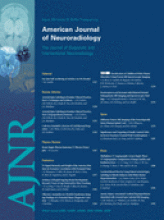J. W. Chang, Y. Katayama, and T. Yamamoto, eds. New York: SpringerWien; 2006, 150 pages, 50 figures.
This volume is a supplement of Acta Neurochirurgica, which covers a conference held in Seoul, Korea, in September 2005 under the auspices of the International Society of Reconstructive Neurosurgery and the Neurorehabilitation Committee of the World Federation of Neurosurgical Societies.
The first paper discusses clinical neurorehabilitation and describes the organization of a rehabilitation center in Germany. The multidisciplinary nature of such efforts and the progression of rehabilitation efforts from the time of the acute brain insult through discharge are described.
There follow 9 papers on involuntary movement disorders focusing mainly on the use of deep brain stimulation for Parkinson disease and dystonia. Much of this section includes repetition, because there is not a large variation in the general approach between the different groups reporting their results; however, the inevitable variability of some aspects of technique is illustrated. Descriptions of investigation of electrophysiology of the subthalamic region with microelectrodes are presented. Of particular interest are the articles that describe treatment of dystonia with deep brain stimulation. Surgical management of this disorder is less well established than Parkinson disease, and the experience with deep brain stimulation for dystonia presented in these articles is valuable. One article describes the use of both deep brain stimulation and motor cortex stimulation for movement disorders occurring after stroke. A study of fluorodeoxyglucose–positron-emission tomography (FDG-PET) performed before and after placement of bilateral subthalamic nucleus stimulation electrodes reports the effects of such stimulation on regional cerebral metabolism in advanced Parkinson disease.
The next section includes 6 articles on pain. This diverse group of articles includes presentations of stimulation of the primary motor cortex, intrathecal baclofen treatment, and stimulation of the cingulate cortex in a rat model. Long-term follow-up results are presented for dorsal root entry zone lesions used for intractable pain after brachial plexus injuries. Another article presents long-term results from percutaneous radio-frequency posterior primary ramus neurotomies performed for low back pain.
The 4 articles about epilepsy are also a diverse group. The first article presents chronic deep brain stimulation of the subthalamus and anterior thalamus for refractory partial epilepsy. The second article discusses vagus nerve stimulation for pediatric epilepsy. The third article discusses seizure control after gamma knife radiosurgery for nonhemorrhagic arteriovenous malformations, and the final article in this section discusses surgical resection of cavernous angiomas located in eloquent areas.
The next section is designated specifically as spinal cord, though other sections also contain articles that relate to the spine. The first article in this section discusses the effects of spinal cord stimulation on cerebral hemodynamics, and the second article is a case report describing idiopathic syringomyelia.
The final section, on cell transplantation, includes several articles describing experiments with stem cells used in animal models. The first of these reports presents migration of bone marrow stem cells in the ischemic brain. The second article describes behavioral effects of human mesenchymal stem cells transplanted into the injured brain in a rat model. The next article reports effects of human mesenchymal stem cell transplantation combined with growth factor infusion for repair of the injured spinal cord. The fourth article on stem cells reviews relations between stem cells and certain cytokines in possible applications for stroke therapy. The final 2 articles are more specifically technologic. The first of these discusses the use of laser technology to control the growth of neurons in a laboratory preparation, and the final article describes a device for making deep brain lesions in animal models for studies of neurodegeneration and neuroregeneration.
This volume covers a spectrum of current functional neurosurgery. Some of the described procedures have become well established in recent years, namely, deep brain stimulation for Parkinson disease and vagus nerve stimulation for intractable epilepsy. Other procedures described in these articles, such as intrathecal baclofen treatment and dorsal root entry zone lesions, are somewhat older treatments. The articles on dystonia are particularly useful, and other articles are provocative. Most of the treatments discussed in this volume rely heavily on neuroimaging to localize targets for devices. In that sense, the neuroradiologist may be interested in these reports; however, there is only one article, the one studying FDG-PET, that is mainly based in radiology, and radiologic illustration in the book is quite limited. The best illustrations in the book are in the section describing stem cell research. Although the content of some of the articles is quite valuable, the volume does suffer from the stilted English usually found in the compilation of papers from such an international conference. Although the quality of the articles is uneven, it is probable that anyone with interests in functional neurosurgery will find something of interest from perusing this volume.

- Copyright © American Society of Neuroradiology












